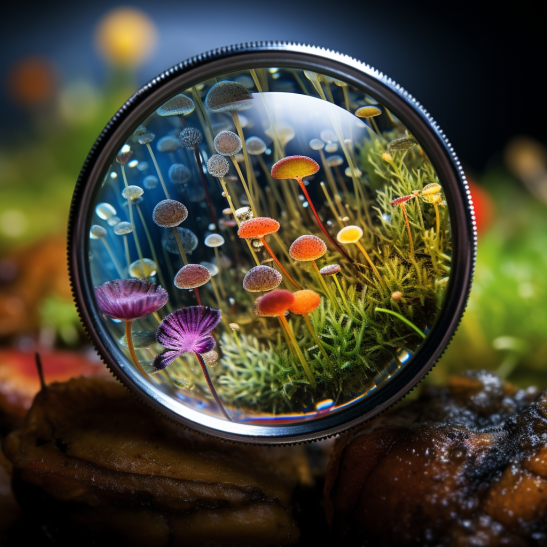Introduction
Microphotography, the art and science of capturing images of tiny objects and organisms, offers us a glimpse into a world that’s often hidden from the naked eye. With the aid of microscopes and advanced imaging techniques, this captivating discipline allows us to explore the intricacies of life at a microscopic level. In this comprehensive guide to microphotography, we’ll take you on a journey through the fascinating realms of this field, covering everything from equipment and techniques to applications and inspiration.
Chapter 1: Getting Started with Microphotography
1.1 The Essentials
Before diving into the intricate world of microphotography, it’s crucial to understand the fundamental components that make it all possible. In this section, we’ll explore:
- Microscopes: The cornerstone of microphotography, we’ll delve into the types of microscopes commonly used, such as optical, electron, and scanning probe microscopes.
- Cameras: Learn about the various camera options for capturing microphotographs, including dedicated microscope cameras and DSLR setups.
- Accessories: Discover essential accessories like microscope stages, lighting systems, and objectives that enhance the quality of your microphotographs.
1.2 Choosing the Right Microscope
Selecting the right microscope for your microphotography endeavors is crucial. We’ll provide guidance on factors to consider when making this decision, such as magnification capabilities, microscope types, and budget considerations.
Chapter 2: Lighting Techniques for Microphotography
2.1 The Role of Lighting
Lighting plays a pivotal role in microphotography. This section explores the importance of proper illumination and discusses various lighting techniques, including:
- Transmitted Light: Understanding how transmitted light microscopy works and when to use it.
- Reflected Light: Exploring reflected light techniques and their applications.
- Darkfield Illumination: Discover how darkfield illumination enhances contrast in microphotographs.
2.2 Polarized Light Microscopy
Polarized light microscopy is a specialized technique that provides valuable insights into various materials’ properties. We’ll delve into the principles behind polarized light and its applications in microphotography.
Chapter 3: Sample Preparation
3.1 Preparing Your Samples
Effective sample preparation is essential for successful microphotography. This section covers the steps involved in sample preparation, including fixation, staining, sectioning, and mounting.
3.2 Preparing Biological Samples
When dealing with biological specimens, specific techniques are required to ensure optimal results. Learn how to prepare biological samples for microphotography, from specimen collection to preservation.
Chapter 4: Advanced Microphotography Techniques
4.1 High-Speed Microphotography
Explore high-speed microphotography, a technique used to capture rapid events that occur at a microscopic scale. Discover applications in fields like biology and materials science.
4.2 Fluorescence Microscopy
Fluorescence microscopy allows us to visualize specific molecules and structures within cells and tissues. We’ll delve into the principles of fluorescence and how it’s applied in microphotography.
Chapter 5: Applications of Microphotography
Microphotography finds applications in a wide range of fields. In this chapter, we’ll explore how microphotography contributes to:
- Medicine: Discover how it aids in disease diagnosis, cellular research, and medical imaging.
- Biology: Explore its role in studying microscopic organisms, cell structures, and biological processes.
- Materials Science: Learn how microphotography assists in material analysis and quality control.
Chapter 6: Inspiring Microphotography Examples
In this section, we showcase stunning examples of microphotography from various photographers and scientists. These captivating images demonstrate the beauty and importance of the microscopic world.
Chapter 7: Tips for Successful Microphotography
7.1 Patience and Precision
Mastering microphotography requires patience and precision. We’ll provide valuable tips and techniques to improve your skills and capture exceptional microphotographs.
7.2 Post-Processing and Editing
Discover post-processing techniques and software tools used to enhance and refine microphotographs.
Conclusion
Microphotography is a captivating discipline that unveils hidden wonders at the microscopic level. Armed with knowledge about equipment, techniques, and applications, you’re now prepared to embark on your microphotography journey. So grab your microscope, camera, and curiosity, and start exploring the mesmerizing world that lies beyond the limits of the naked eye. Happy microphotographing!
